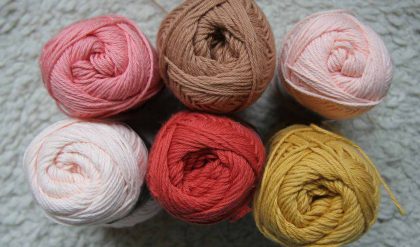If we consider the points made earlier about what constitutes a yarn, we can make reasonable deductions as to what fiber characteristics and properties are important in yarn production. The process sequence of Figure 1.8 is a useful starting point. The actions involved in stages I and II indicate that most materials have to be cleaned and disentangled. The level of cleaning is important because, the more work done to clean the material, the greater the chances of damaging fibers. Thus, cleanliness of the material prior to its processing is an important parameter; this is mainly applicable to natural organic fibers. The processes in stages III, IV, and V involve attenuation and, as indicated in Figure 1.9, this may involve drafting zones where rollers are placed a specified distance apart. As explained in Chapter 5, this distance depends on fiber length. With any type of natural fiber, there are different lengths of fibers in a fibrous mass. Since drafting zones must be set to avoid the breaking of the longer fibers during attenuation, very short fibers at times will be between the two drafting rollers and are not properly attenuated.
Thus, as we will see in Chapters 5 and 6, very short fibers tend to cause irregularities in the drafted material and ultimately in the yarn. It is therefore important to establish the fiber length distribution of the raw material to be processed so that, where necessary, the short fibers can be removed during processing. It is also important to minimize fiber breakage in processing; therefore, the fiber strength-extension characteristic, which is indicative of the fiber toughness, can play a major role in the limitations placed on parameters of the operating machine — in particular rotational speed and the set closeness of component parts. Fiber length, fineness, strength, and extension are also important material parameters to the spinning process of stage V.
All contribute significantly to the yarn tensile property and thereby enable the forming yarn to withstand the mean tension and the peak values of tension fluctuations during spinning and in subsequent processing. The strength of a yarn depends on how well its constituent fibers can equally share the tension induced by the load applied to the yarn. The finer the fiber, the greater is the number of fibers in a particular count of yarn to share the applied load; finer fibers therefore tend to give stronger yarns. The distribution and transfer of tension among fibers in a yarn depend on the length and frictional contact of the overlap of their ends. Longer fibers tend to give longer overlaps.
The frictional contact is largely governed by the level of twist; the higher the twist, the higher the frictional contact. Also, the greater the number of fibers present, the greater is the number of frictional contact points. Thus, for adequate frictional contact, a yarn composed of fine, longer fibers will require less twist than one composed of short, coarser fibers. Fine-count yarns have fewer fibers in the yarn cross section and are therefore made from fine, longer fibers. Fiber rigidity and cohesion are important properties in twist insertion. The intrinsic rigidity of fibers is the property that determines resistance to the twist insertion.
Although there are experimental ways6 of measuring intrinsic rigidity, they are impractical commercially. An intuitive understanding is gained from the elastic modulus of the load-elongation fiber characteristics and from the general knowledge that, the finer the fiber, the easier it should be to twist. The rigidity can be strongly affected by the moisture absorbency of the fiber; the rigidity of dry wool fibers is about 15 times greater than that of wool fibers saturated with water. Thus, the moisture regain of fibers, which can be easily measured,7 is also important to spinning.
Cohesion is a fiber property that aids spinning, since it is essentially the ability of fibers to hold together in a mass. Cohesion is related to the relative fiber rigidity as well as its ability to blend or mix with other fibers, and it is influenced by the surface characteristics of fibers or by the frictional resistance of fibers. Fiber friction is again a very difficult property to measure, but simple nonstandard tests can be used for evaluating fiber friction.6 For fibers to be processed without difficulty through stages I and II, they must have what is termed crimp; this is a waviness along the fiber length. Crimp enables the cohesion of fibers during carding, combing, and the drawing stages. However, a high level of crimp can be counterproductive, causing particular difficulties in disentangling the raw fiber mass. Natural organic fibers usually retain small amounts of wax or grease on their surfaces after cleaning, which is an aid to the disentangling and the drafting actions of the subsequent processes. They also have significant moisture regain. Most fibers exposed to the atmosphere pick up some moisture; the quantity will depend on the relative humidity and temperature of the atmosphere and on the fiber chemistry.10 The percentage of moisture present, calculated on the oven-dry weight, is the moisture regain of the fiber.7
The moisture regain of natural fibers assists in dissipating electrostatic charges generated during processing. Electrostatic charges can cause processing difficulties such as fibers sticking to and wrapping around components, and static can also cause a lack of fiber cohesion resulting from the action of repulsion of electrostatic forces. Synthetic fibers have low moisture regain and no natural surface lubricants, so fiber manufacturers apply special surface chemicals as processing aids, commonly referred to as surface finishes


Comments are closed.